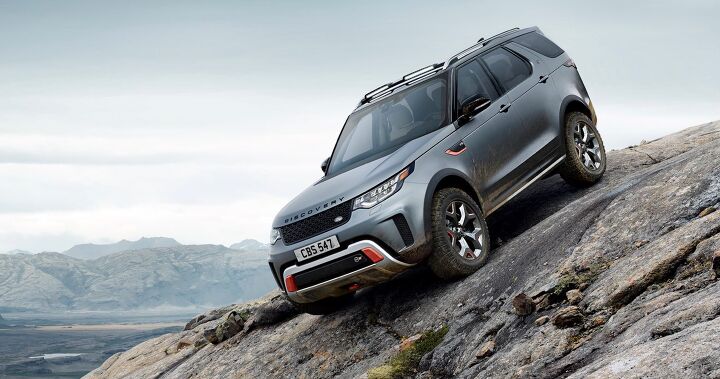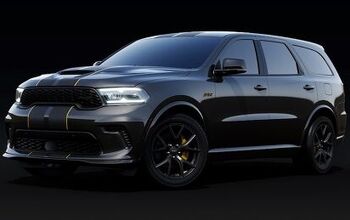USA to the Rescue? Jaguar Land Rover Banks on American Excess During Troubled Times

Jaguar Land Rover finds itself in a truly unfortunate situation. Like many manufacturers, it mistakenly presumed China would be a continual source of sales growth. But JLR also has to contend with the uncertainty of Brexit and tightening emission rules across Europe. The one-two-three punch helped contribute to the $4.4-billion loss the company posted in its latest quarterly earnings report. Having also lost cash in the previous two quarters, the automaker says it will probably need to reduce its 42,500-person workforce by around 10 percent this year.
While there isn’t much to be done about the economic uncertainties surrounding Brexit, which now seems to be perpetually stalled, China really should have been better to JLR. Unlike their mainstream counterparts, luxury vehicles have fared much better in the Asian market. Unfortunately, it was not to be for Jaguar Land Rover; the company is now looking at North America the way an injured tightrope walker might view a safety net.
Despite China’s luxury market continuing to grow (for the most part), Land Rover’s annual sales dropped by nearly a third in 2018. Meanwhile, Jaguar stayed relatively constant — witnessing a very modest amount of growth over the same period. But it still ended in a loss, adding to the company’s problem of dwindling global sales.
According to Automotive News, China’s about-face may have something to do with regional quality control. Earlier this decade, Tata, JLR’s parent company, decided to shift production to China to better cater to local tastes and avoid the 25 percent tariff imposed on all imported vehicles. While this did lead to a sales surge in 2017, quality took a nosedive. Its joint venture with Chery Automobile apparently worsened the company’s already middling reliability credentials, resulting in a swift backlash against the automaker.
From Automotive News:
In China, as well as in the U.S., both brands routinely rank well below the industry average for new and 3-year-old vehicle quality and dependability, based on owner surveys by J.D. Power and Associates.
In 2017 alone, JLR carried out 13 recalls in China for defects with components ranging from engines, instrument panels and airbags to batteries. The recalls covered some 106,000 vehicles, which was equivalent to more than 70 percent of its local sales during the year.
Since August, Jaguar and Land Rover owners have regularly protested in front of JLR’s China headquarters in Shanghai to bring attention to widespread quality problems they allege with their cars and SUVs.
The company’s singular bright spot resides in the West. While global volume may be down, Jaguar Land Rover’s 2018 sales increased 7.3 percent in the United States to a record of almost 123,000 vehicles.
“If we can keep our volumes around where we were last year, I would be more than happy,” Jim Eberhardt, JLR CEO for North America, told Bloomberg at last week’s New York Auto Show. “We focus on the things we can control.”
As the automaker’s largest market, Jaguar Land Rover is praying American tastes won’t change in 2019. It seems like a safe bet. While crossover and utility vehicle sales don’t seem as though they could possibly get any higher, they also don’t seem to be on the cusp of becoming passé. That’s good news for the next-generation Defender, which Land Rover says should arrive in the U.S. in 2020.
“There is always room for further growth and the growth will have to come from new product,” Eberhardt said.
Still, it’s doubtful whether the Defender can set things right by itself. Tata is rumored to be examining its strategic options for Jaguar Land Rover, including a potential stake sale of the company. It needs to manifest $1 billion in 14 months to replace maturing bonds — not an easy feat, as it also needs some dough left over for continued investments into expensive EV development programs.
[Image: Jaguar Land Rover]

A staunch consumer advocate tracking industry trends and regulation. Before joining TTAC, Matt spent a decade working for marketing and research firms based in NYC. Clients included several of the world’s largest automakers, global tire brands, and aftermarket part suppliers. Dissatisfied with the corporate world and resentful of having to wear suits everyday, he pivoted to writing about cars. Since then, that man has become an ardent supporter of the right-to-repair movement, been interviewed on the auto industry by national radio broadcasts, driven more rental cars than anyone ever should, participated in amateur rallying events, and received the requisite minimum training as sanctioned by the SCCA. Handy with a wrench, Matt grew up surrounded by Detroit auto workers and managed to get a pizza delivery job before he was legally eligible. He later found himself driving box trucks through Manhattan, guaranteeing future sympathy for actual truckers. He continues to conduct research pertaining to the automotive sector as an independent contractor and has since moved back to his native Michigan, closer to where the cars are born. A contrarian, Matt claims to prefer understeer — stating that front and all-wheel drive vehicles cater best to his driving style.
More by Matt Posky
Latest Car Reviews
Read moreLatest Product Reviews
Read moreRecent Comments
- Spectator Wild to me the US sent like $100B overseas for other peoples wars while we clammer over .1% of that money being used to promote EVs in our country.
- Spectator got a pic of that 27 inch screen? That sounds massive!
- MaintenanceCosts "And with ANY car, always budget for maintenance."The question is whether you have to budget a thousand bucks (or euro) a year, or a quarter of your income.
- FreedMike The NASCAR race was a dandy. That finish…
- EBFlex It’s ironic that the typical low IQ big government simps are all over this yet we’re completely silent when oil companies took massive losses during Covid. Funny how that’s fine but profits aren’t. These people have no idea how business works.


































Comments
Join the conversation
For an SUV company to be struggling in today's market really says something about the brand's quality and reputation.
JLR's motto: "There's a sucker born every minute."